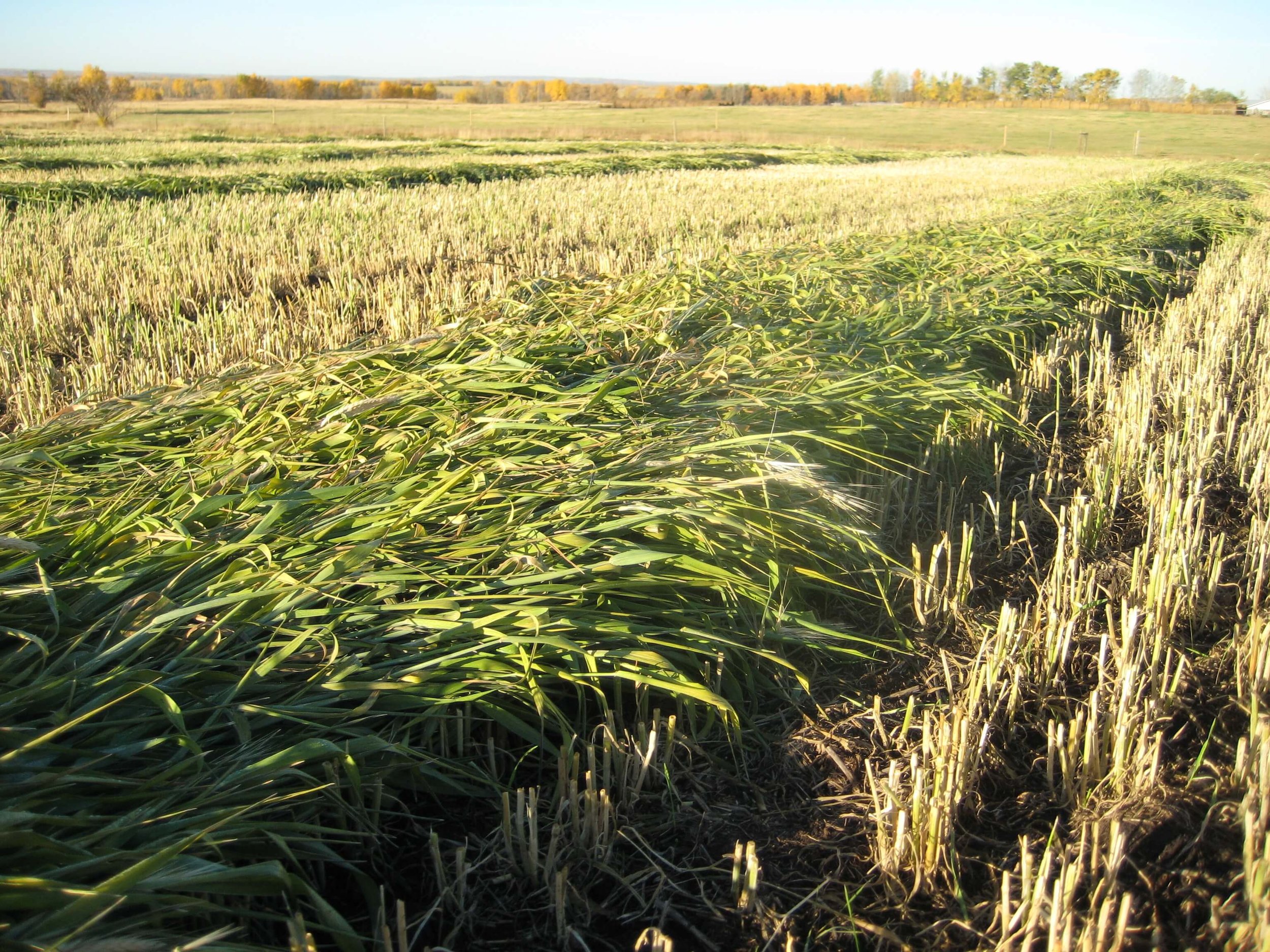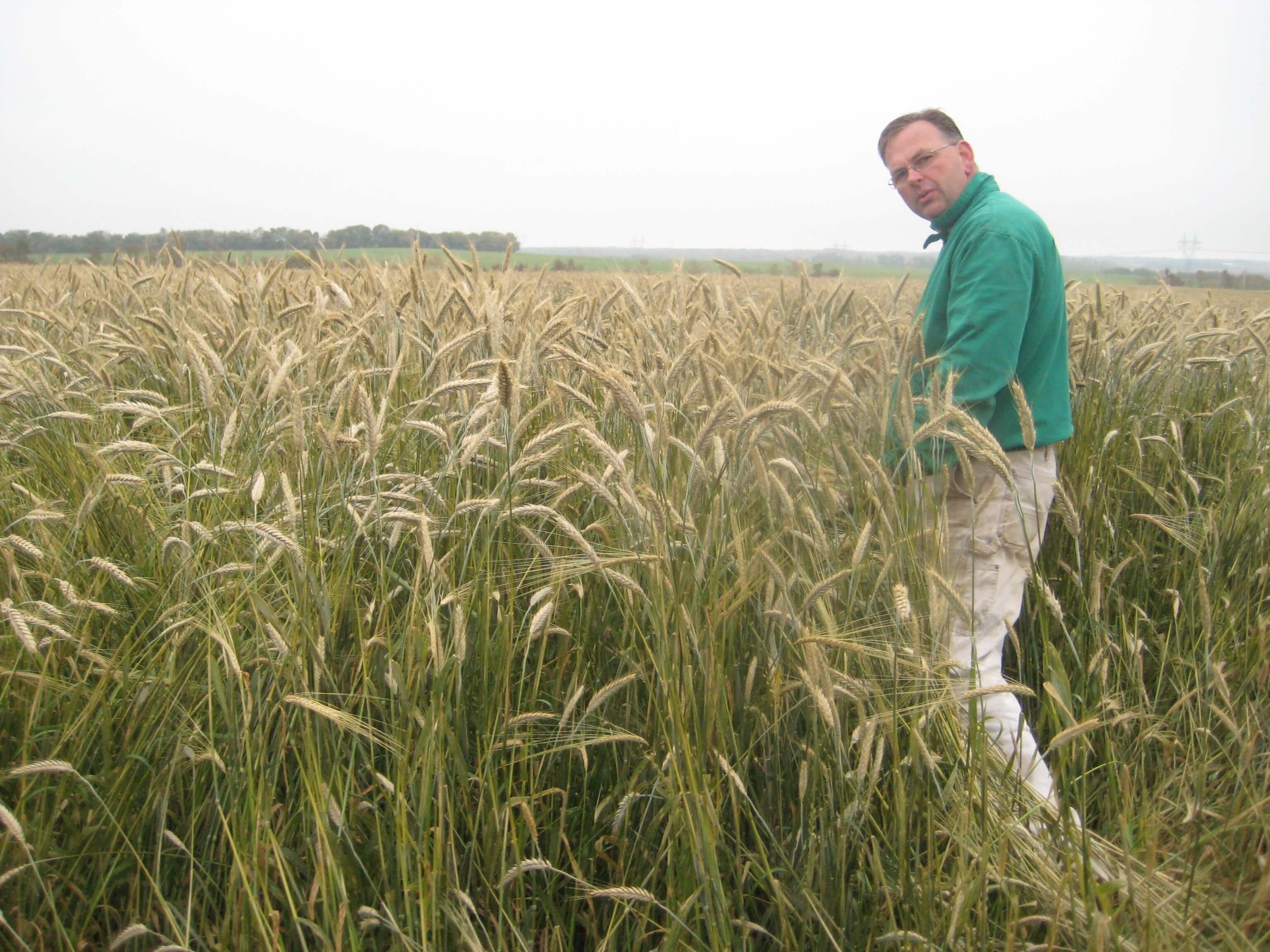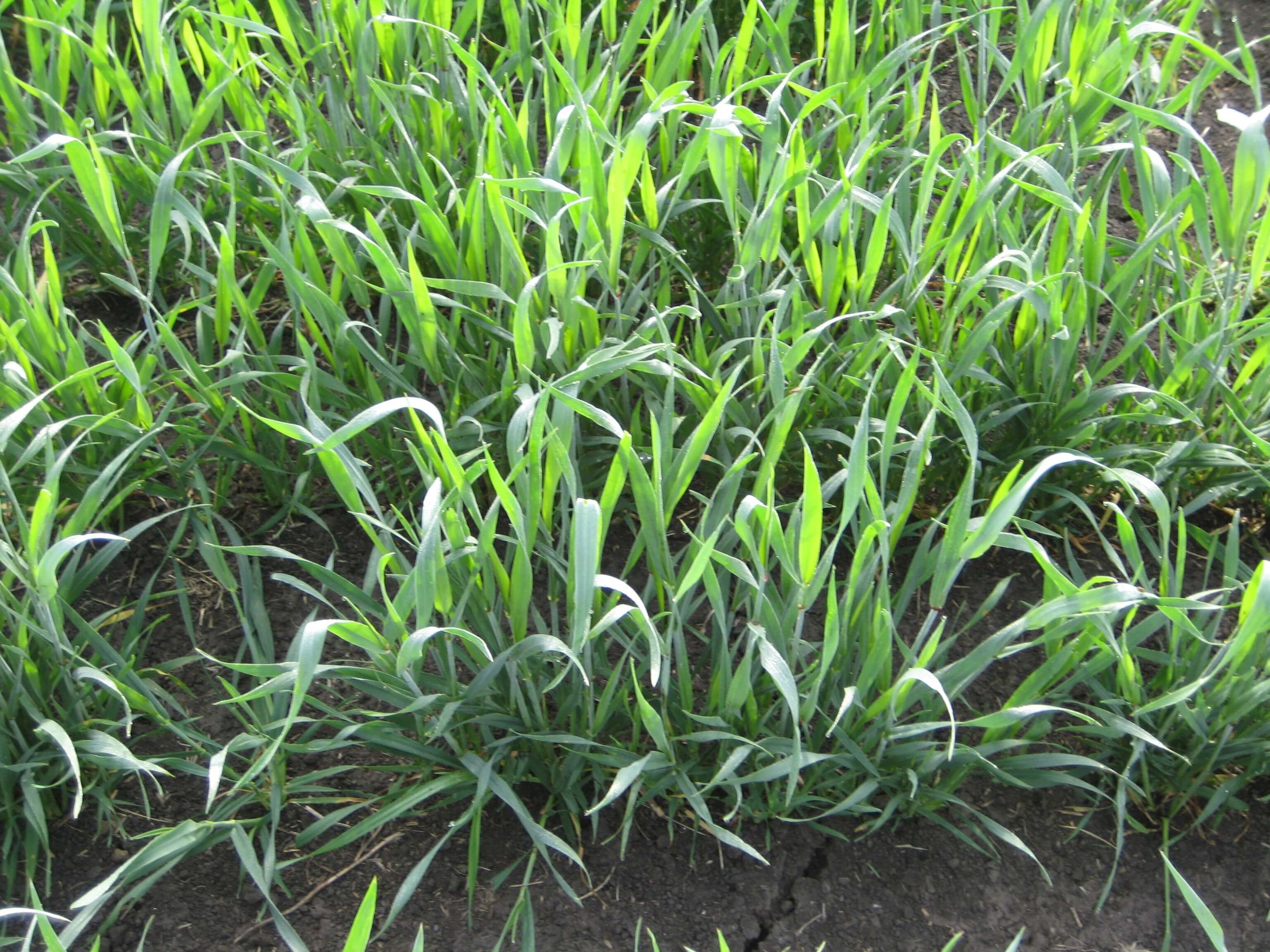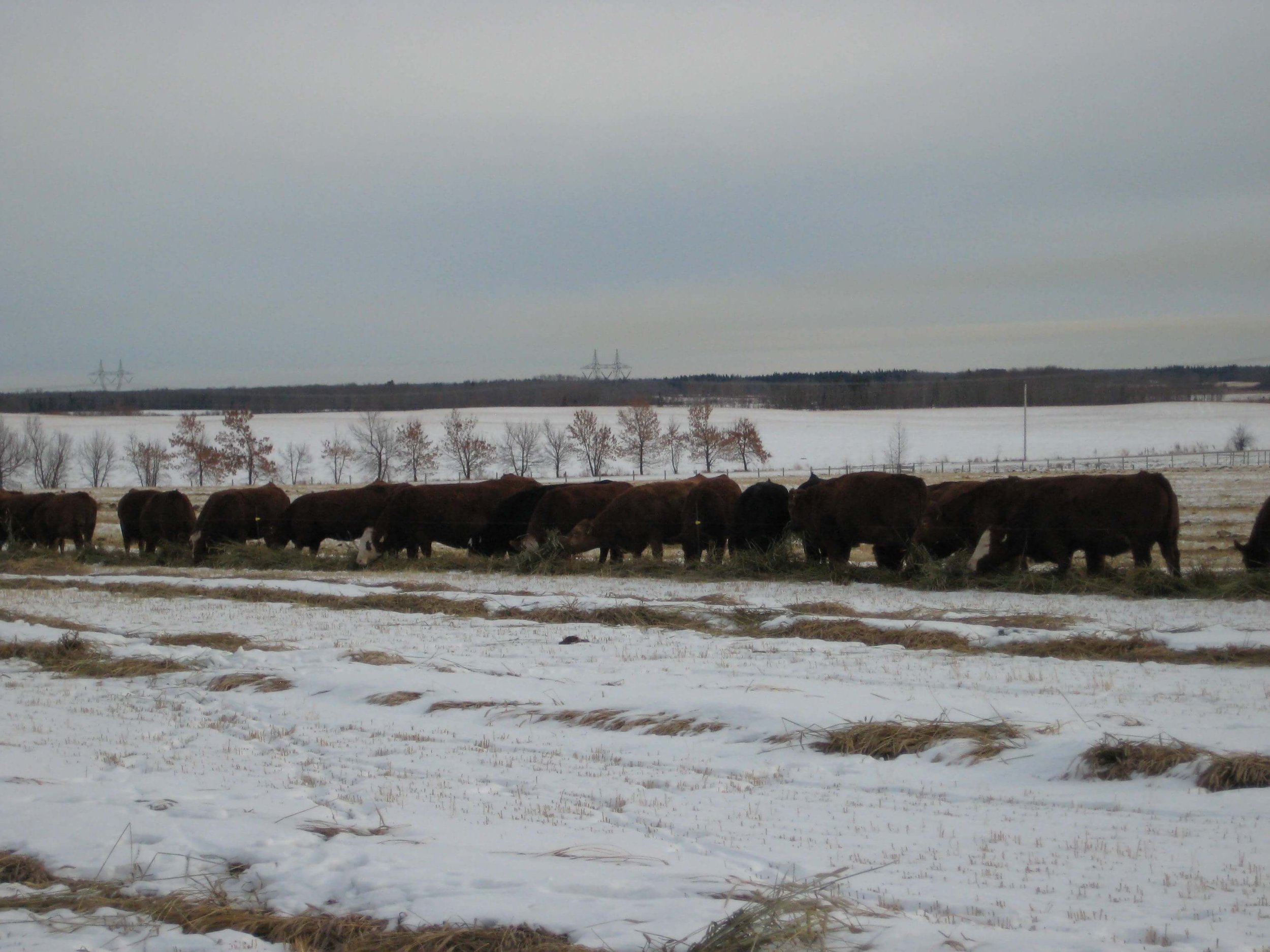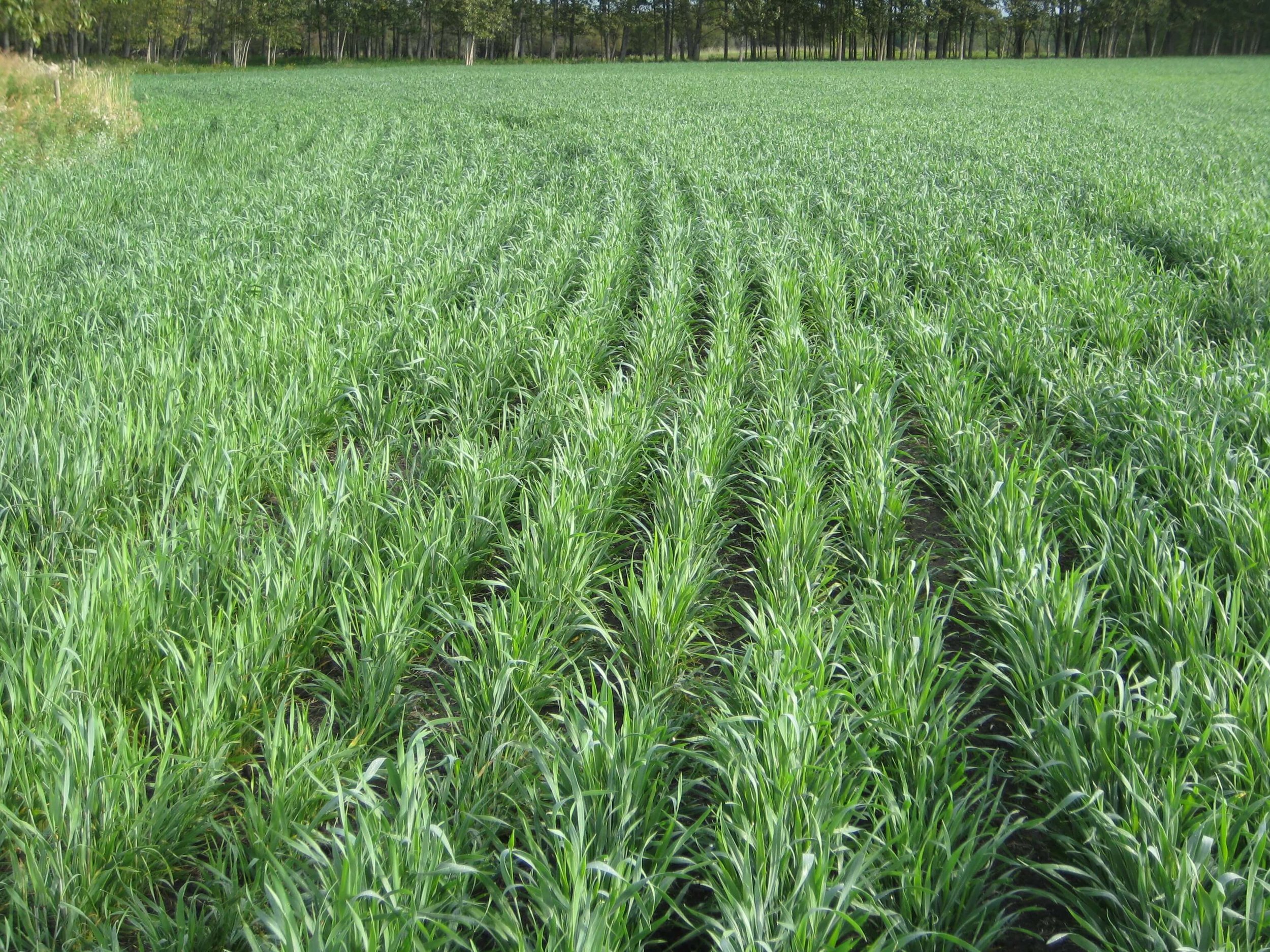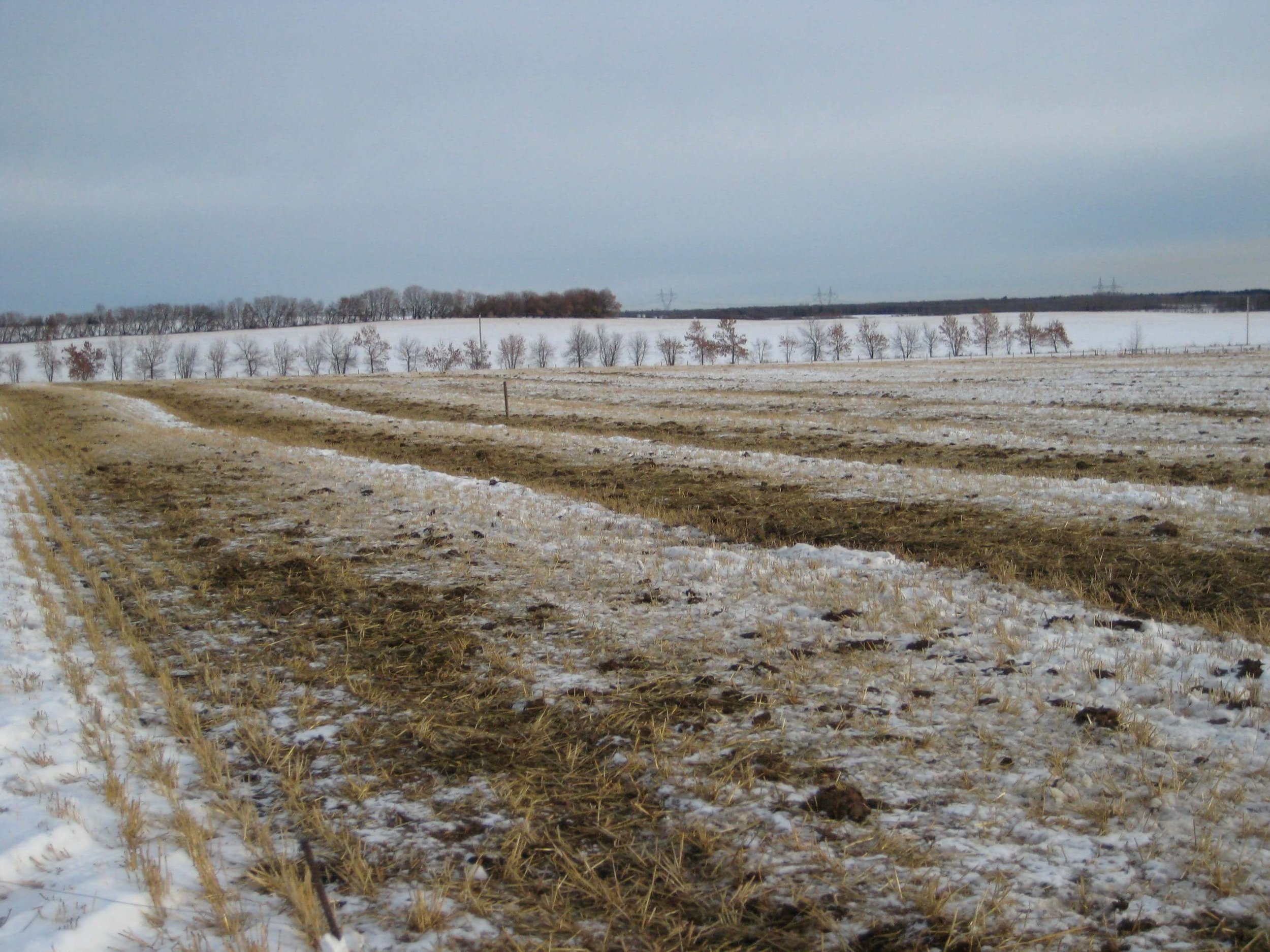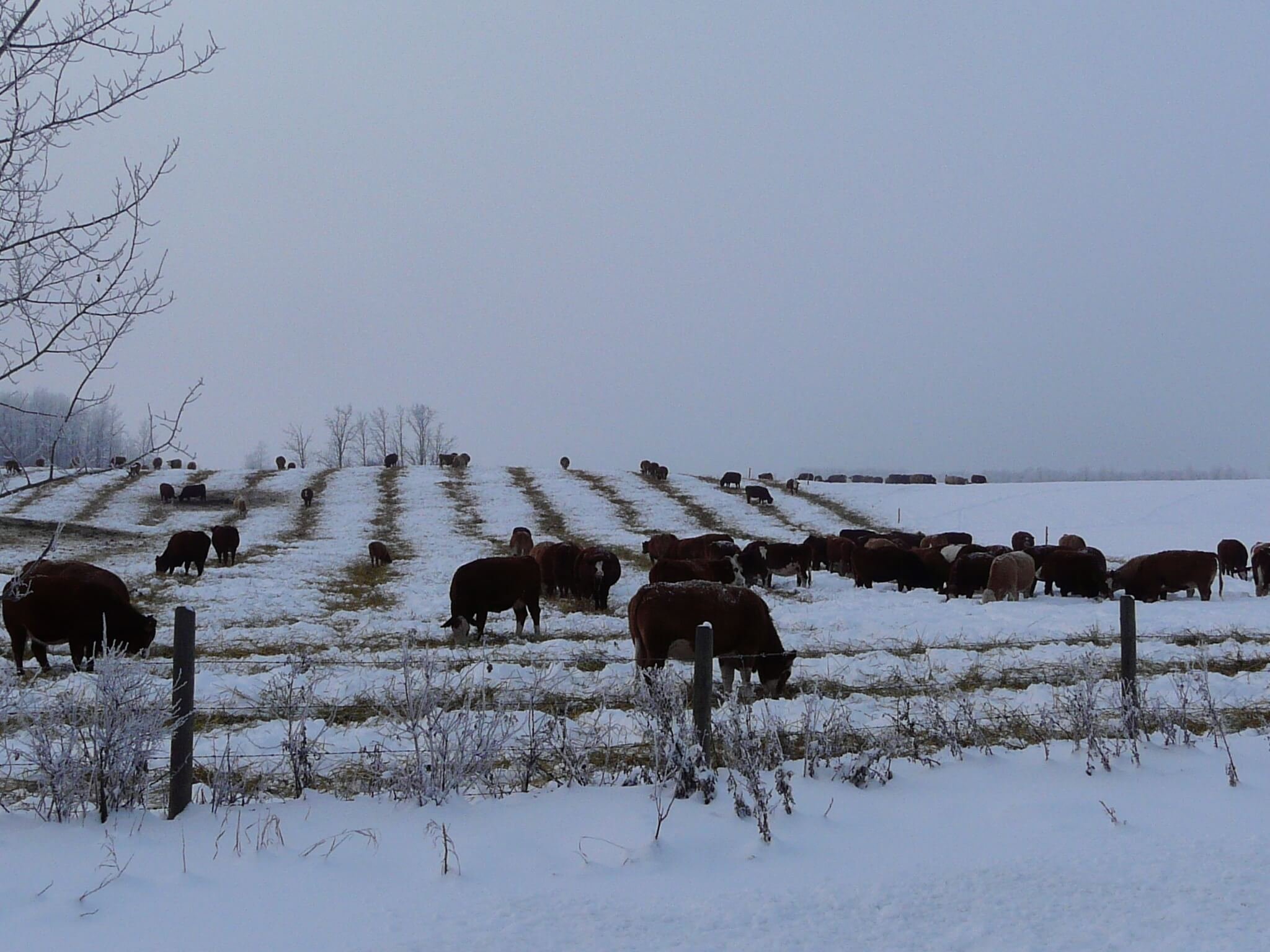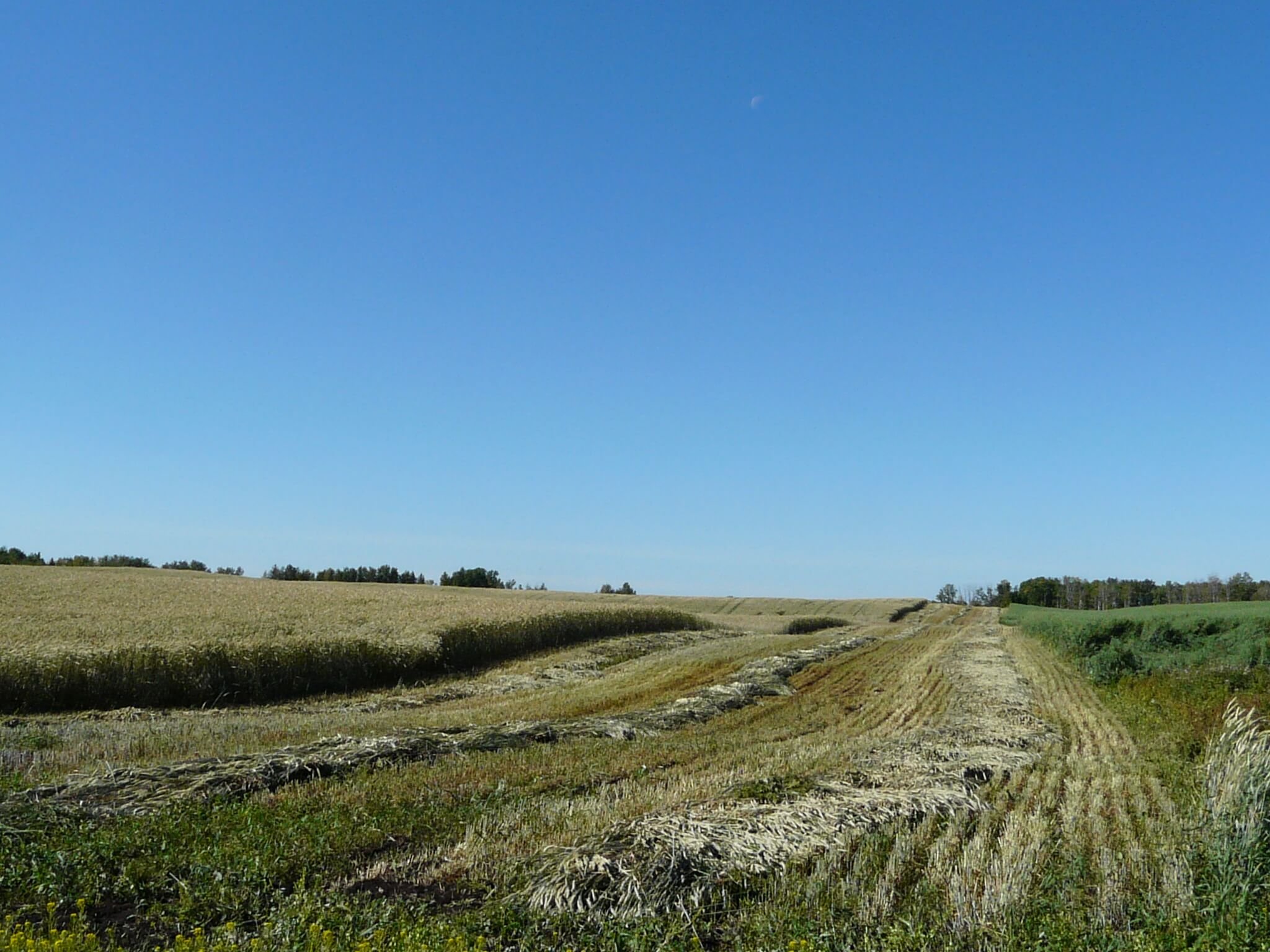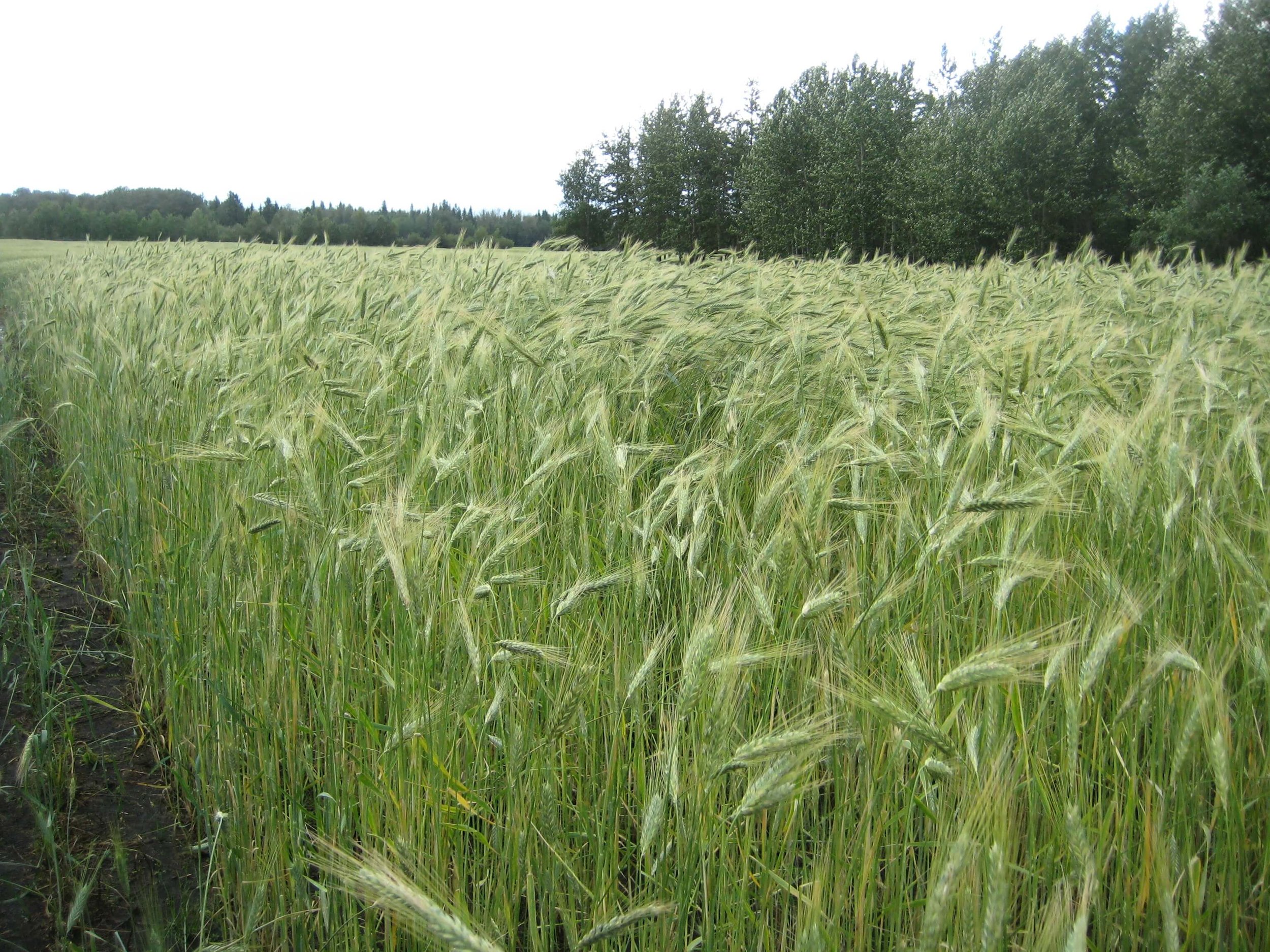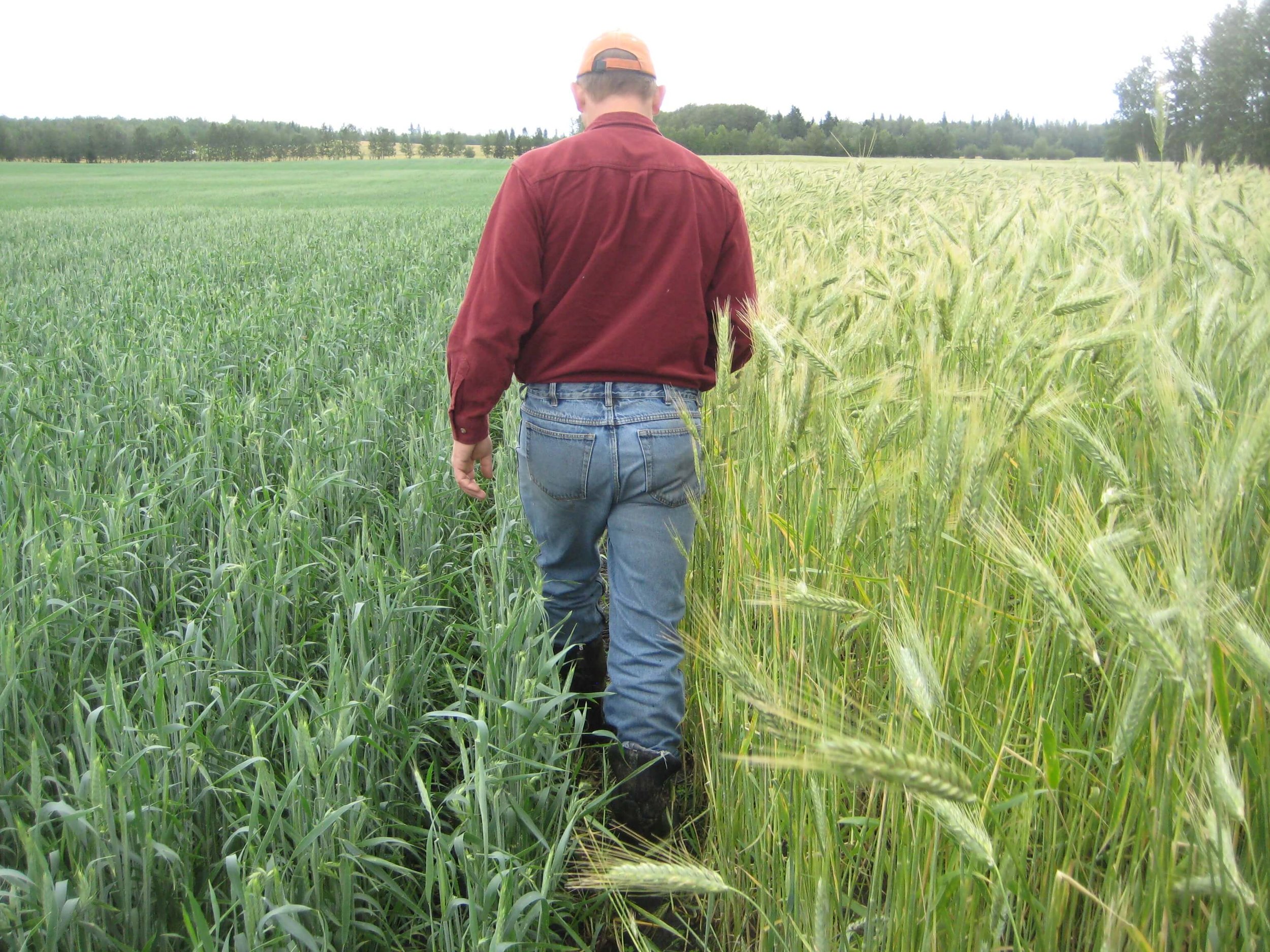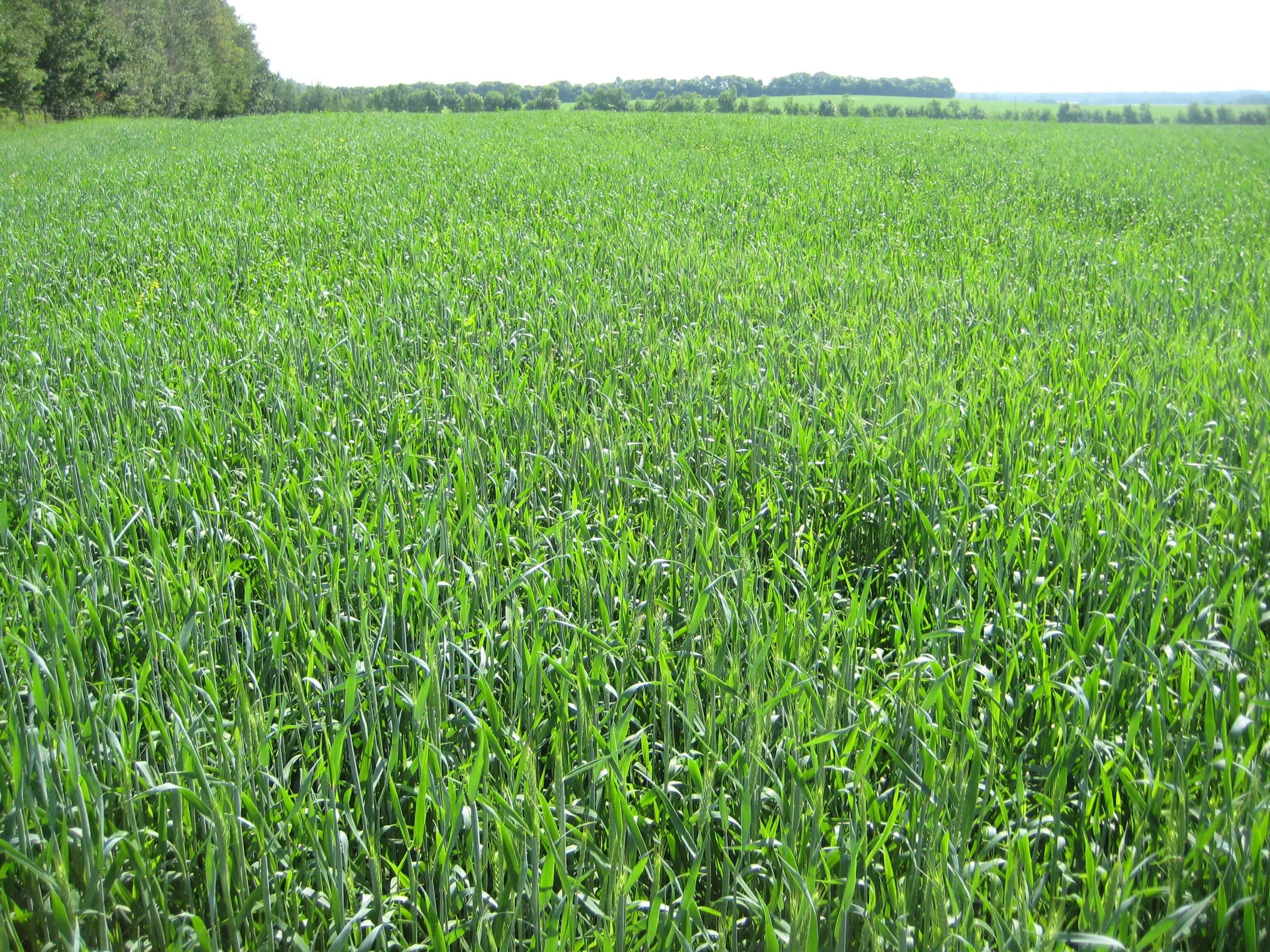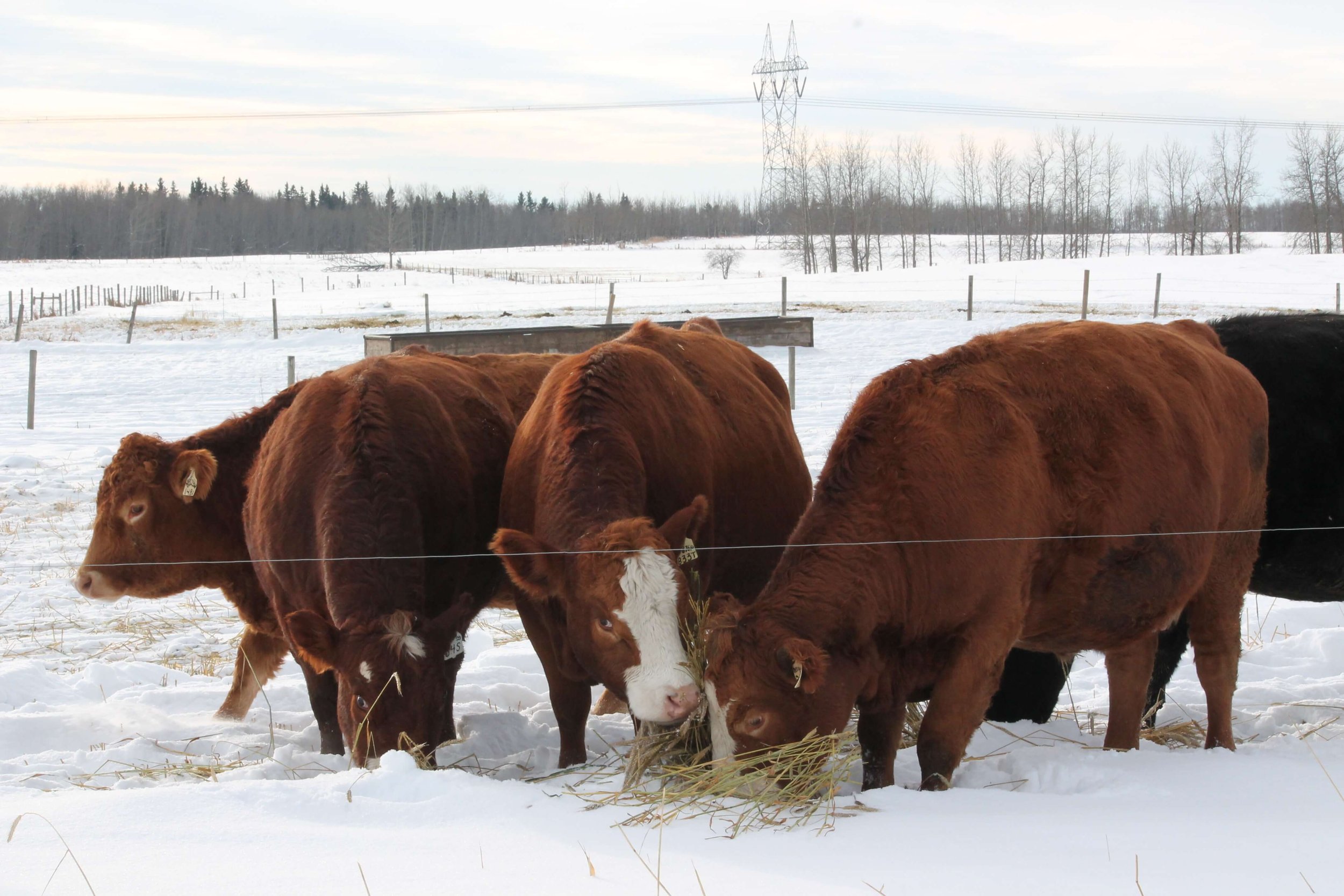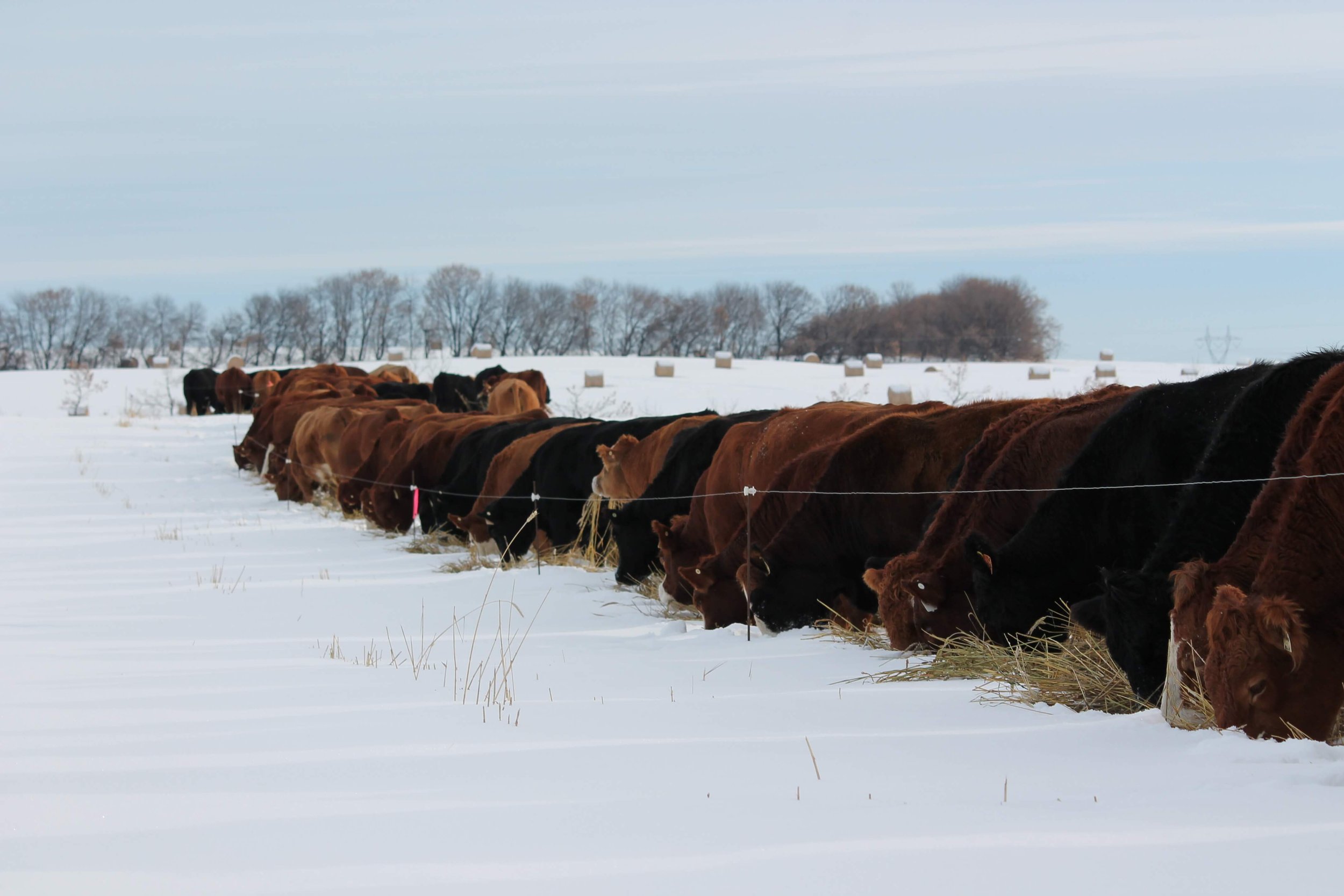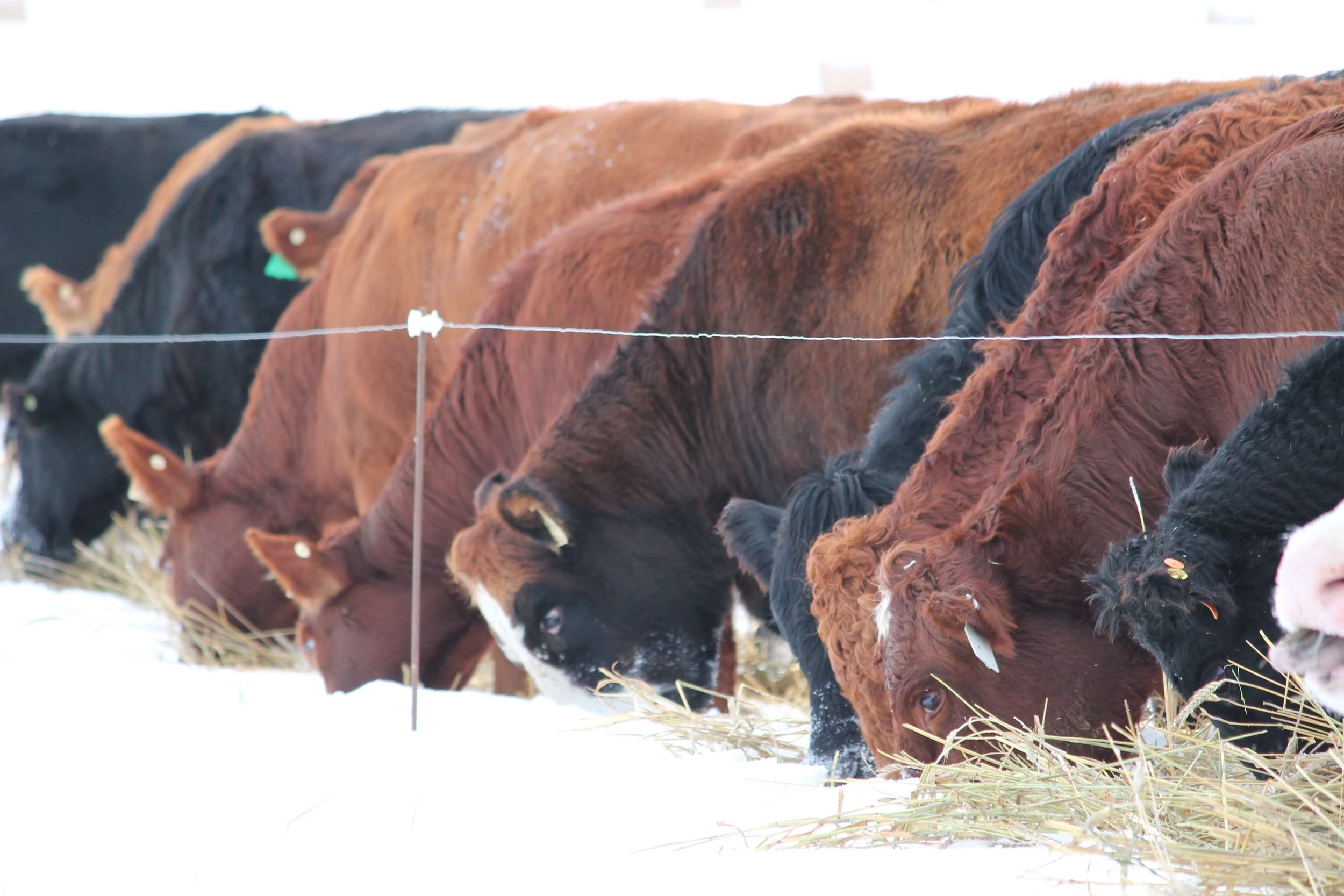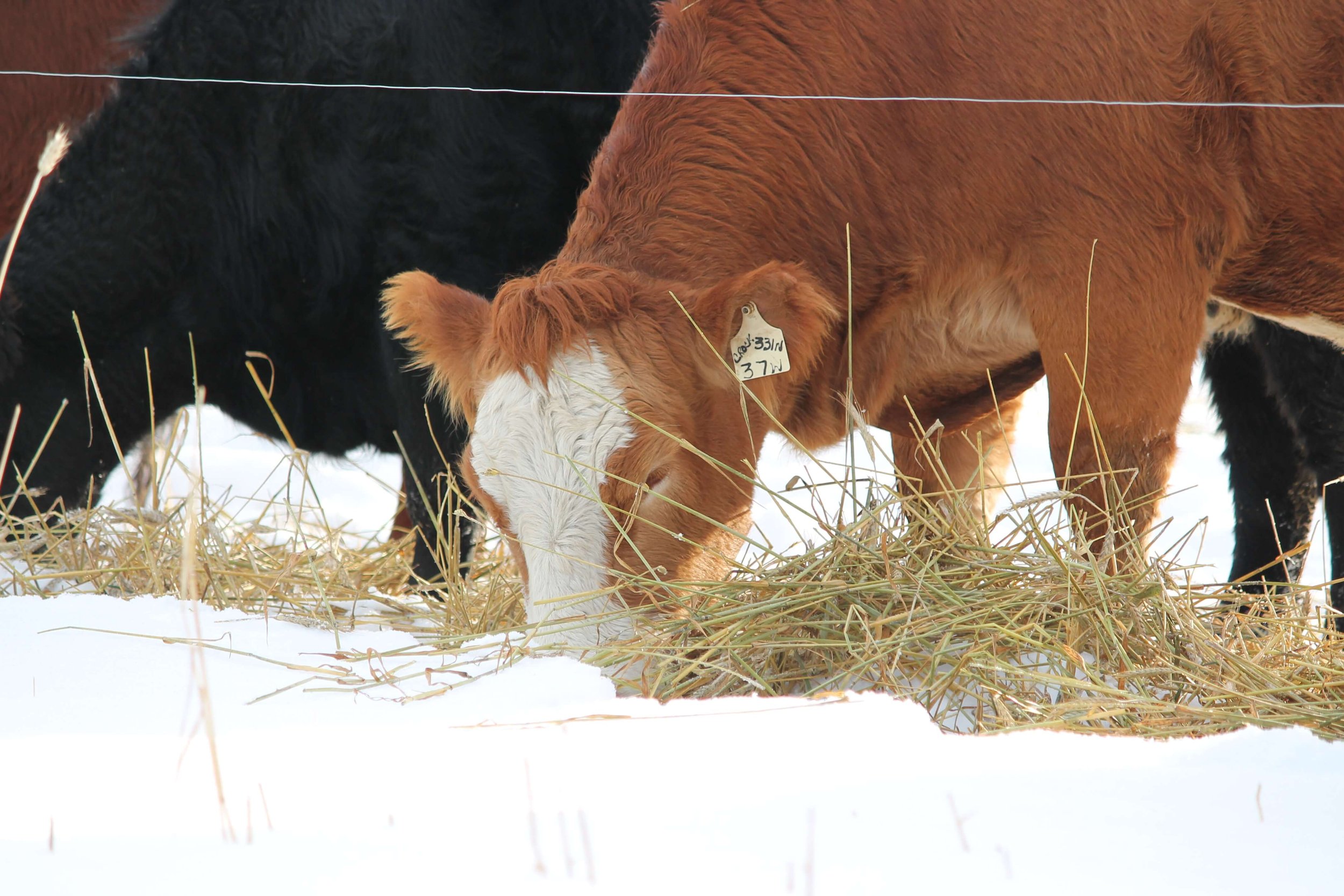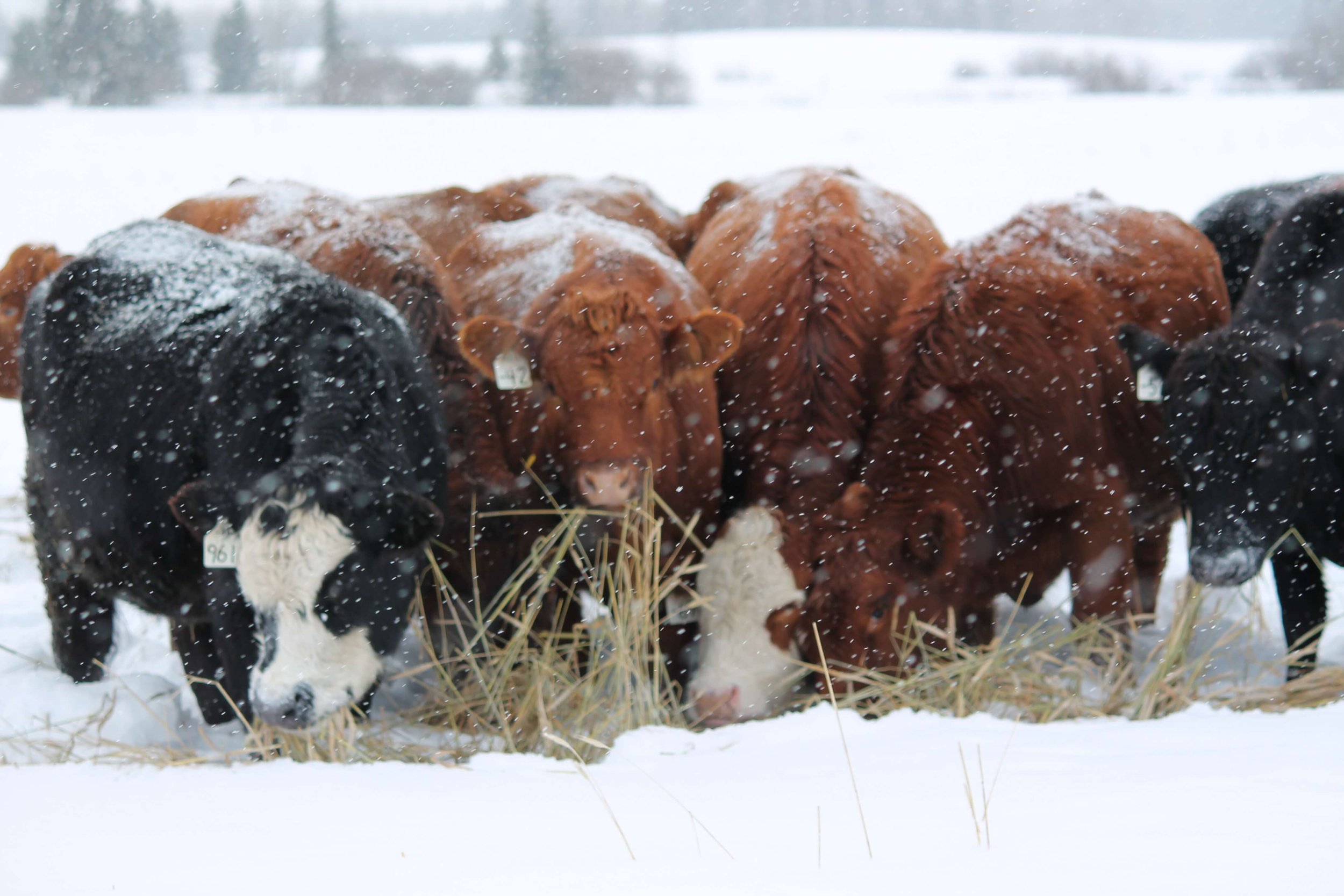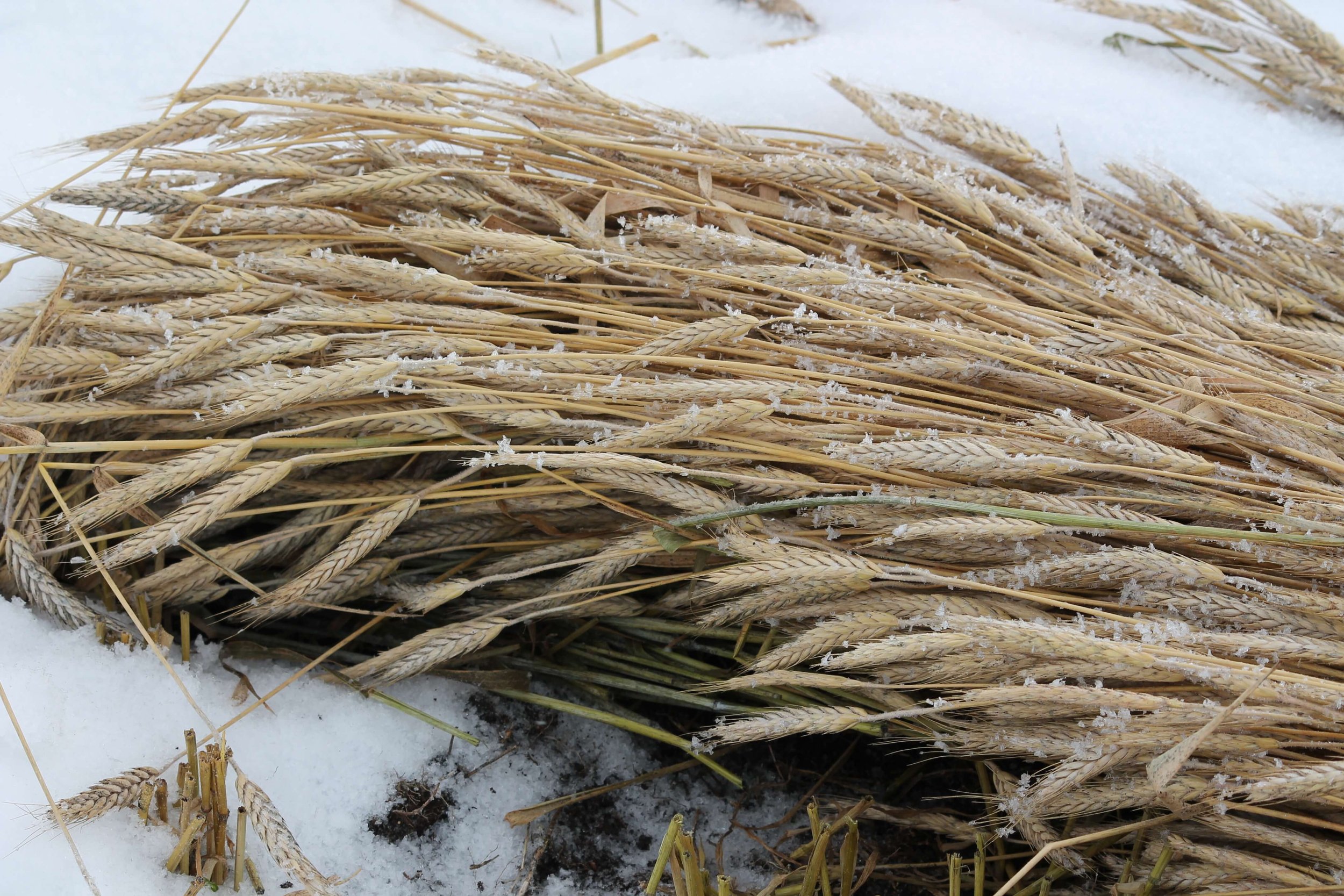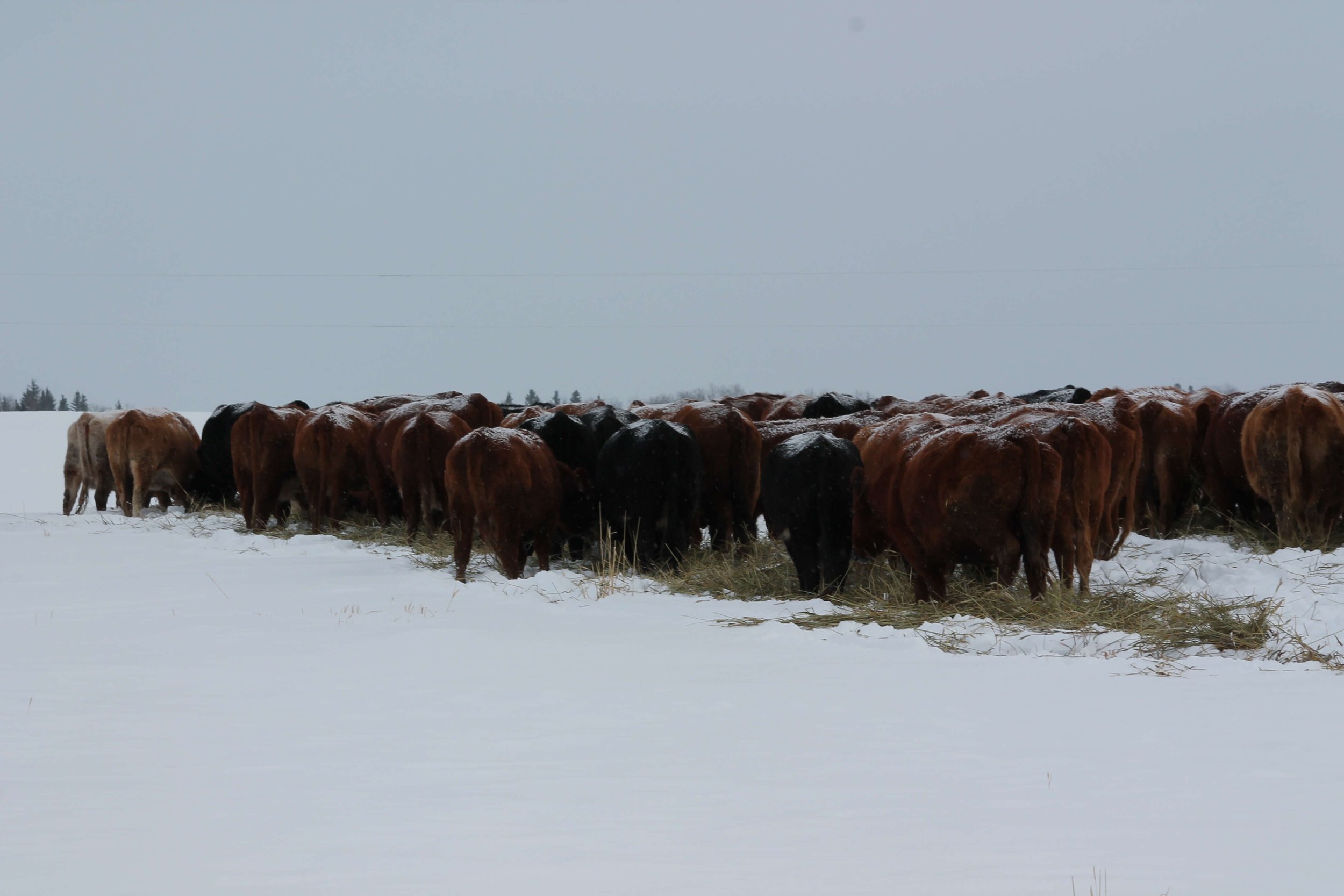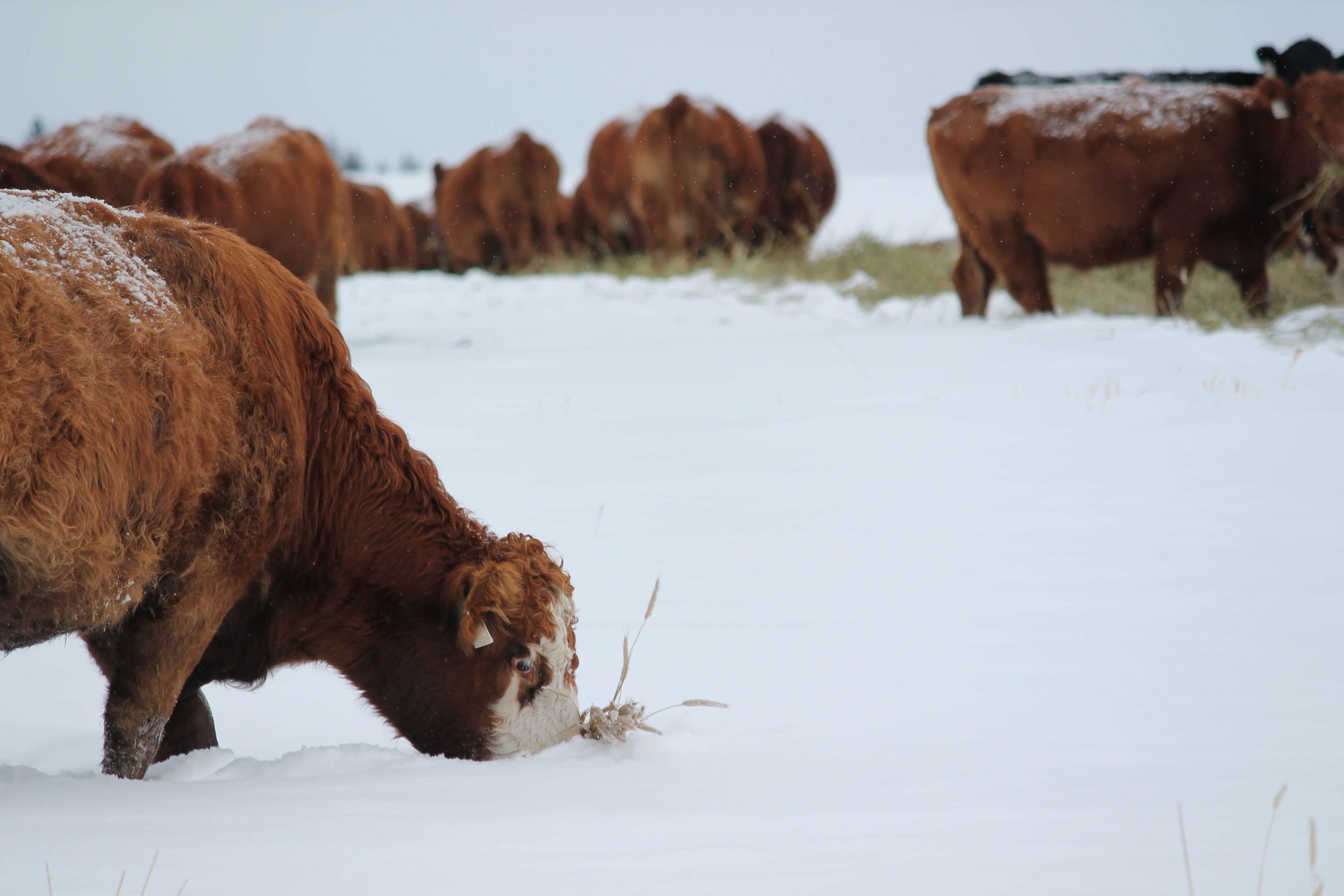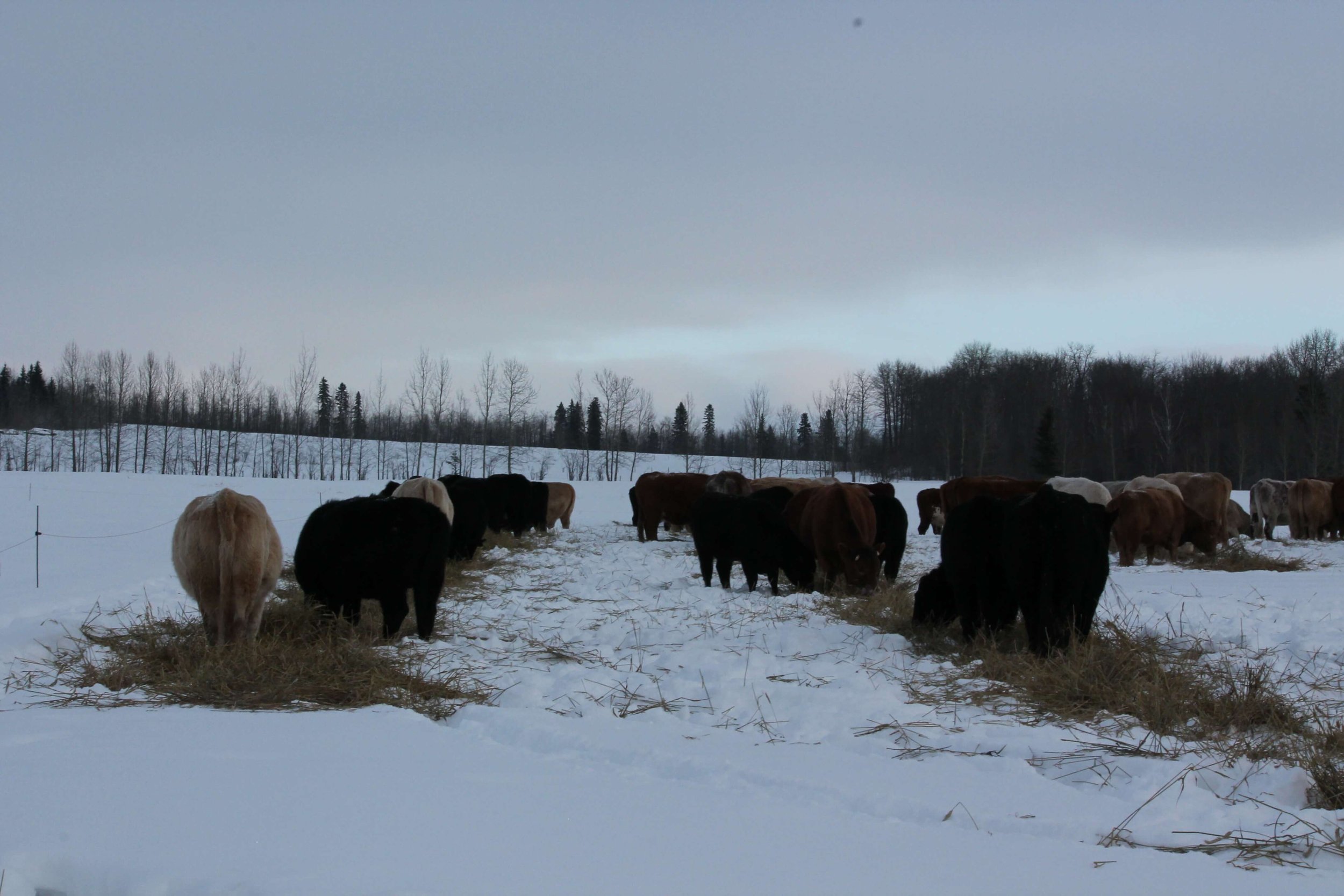Triticale Swath Grazing Demonstration (2012)
Partners.
Chris Bowman
Bob and Larry Kidd
Kevin Porter
Greg Thompson
Bill Chapman
Grant Lastiwka
Barry Yaremcio
Triticale Swath Grazing Demonstration (2012)
Overview.
Beginning in 2009, under the direction and management of WCFA, Alberta producers and specialists evaluated the suitability of triticale swath grazing in terms of nutrition, palatability, practicality and cost. WCFA set up a four-year program in which producers would test spring triticale, winter triticale or a mixture of both as part of their swath grazing systems. Since then, WCFA, producer cooperators and Alberta Agriculture and Rural Development (ARD) advisors have observed and analyzed the practice in terms of crop production, nutrition, palatability, cost of feeding and overall value within a grazing system.
Triticale for Swath Grazing Info Sheet
Objectives.
Determine if triticale (winter and spring varieties) were a viable option (in terms of nutritional quality, cost of production, utilization and palatably) when compared to other cereal forage crops. Determine how different varieties of spring and winter triticale grew and yielded on field scale demonstration sites.
Demonstration Information.
Key Project Findings
Nutrition
Nutritional analysis of feed samples was a key component of the project. Barry Yaremcio, Beef/Forage Specialist with Alberta Agriculture and Forestry, reviewed the results of the laboratory feed analysis of the samples. His assessment: “From the feed tests that we ran,” says Yaremcio, “the quality was more than adequate for cows in mid- to late-pregnancy.”
Palatability
Despite anecdotal concern about palatability going in, none of the cooperating producers experienced significant issues.
Cost of Feeding
Compared to all-in conventional feeding cost of $2.50 per animal per day, triticale swath grazing appears to be considerably cheaper. Consider the results achieved by one cooperator who swath grazed 210 cows – averaging 1,400-lb. and in their third trimester -- on spring and winter triticale for 90 days. His total cost per animal per day, based on a 1,000-lb. Animal Unit Equivalency, was 93 cents.
Value within a grazing system
The project evaluated various combinations of spring triticale, winter triticale and a mix of both. This spring-winter mixture was found to combine low production cost (both types are planted together in the fall) and high output (producing up to 18 months of grazing before being cut for silage).
To view the final report please download the PDF below




